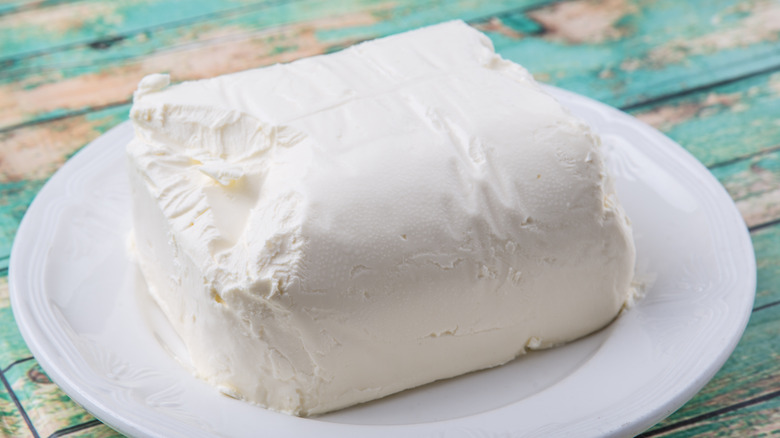The Best Way To Soften Cream Cheese
Try spreading cream cheese from a cold, hard block onto your bagel. Not only is it frustrating to try to get frigid cream cheese to spread, but you likely won't get an even coating. And while this is annoying, it hopefully won't ruin your entire dish. But if you forget to soften cream cheese for cooking or baking recipes, it just might cause a disaster (or a texture change at least). For example, cold cream cheese will ruin your no-bake cheesecake, causing it to be lumpy instead of smooth and creamy. It could also alter the consistency of dishes like cream cheese frosting, pumpkin cheesecake, and caramel pecan cheesecake fruit dip.
Some foods can sit out on the counter for a long time, but cream cheese isn't one of them. According to the U.S. Food Safety and Inspection Service, cream cheese should be left out for no more than two hours before it may become unsafe to eat. You may be able to soften a whole block on the counter in as little as half an hour, The Pioneer Woman shares, but you'll have to wait around until it's done before adding it to your recipe. If you're in a hurry but want to safely soften your cream cheese, try this method instead.
Submerge cream cheese in a warm water bath
According to Better Homes & Gardens, the best way to soften cream cheese is by letting it sit in a warm water bath. This is a quick process, as the cream cheese shouldn't need to sit for longer than 15 minutes. Leaving the cream cheese in its foil wrapper, simply place the block in a bowl of warm water and let the softening begin. Hot water out of the tap works best because you don't want it to be boiling, Cheese Knees notes. You can simply let the block sit until it's soft, or you can flip it every few minutes — either way, you want the whole thing to be submerged in the water (via The Pioneer Woman).
So how is this method any better than heating up cream cheese in the microwave? For one, you won't subject your block to potential uneven heating, notes Better Homes & Gardens, as your cream cheese should be fully covered in water. And if you microwave it for too long, you risk cooking the cream cheese, which creates a different textural challenge. If you are determined to use this method, Cheese Knees recommends microwaving in increments of 10 to 15 seconds, checking each time for desired softness. But for a quick set-it-and-forget-it method, a warm water bath is the way to go.

